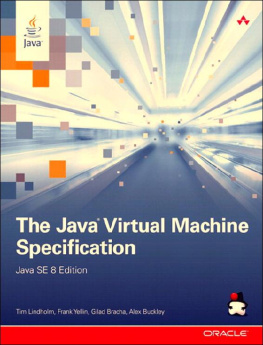Choppella Krishna - Mastering Java Machine Learning
Here you can read online Choppella Krishna - Mastering Java Machine Learning full text of the book (entire story) in english for free. Download pdf and epub, get meaning, cover and reviews about this ebook. City: Birmingham, year: 2017, publisher: Packt Publishing, genre: Children. Description of the work, (preface) as well as reviews are available. Best literature library LitArk.com created for fans of good reading and offers a wide selection of genres:
Romance novel
Science fiction
Adventure
Detective
Science
History
Home and family
Prose
Art
Politics
Computer
Non-fiction
Religion
Business
Children
Humor
Choose a favorite category and find really read worthwhile books. Enjoy immersion in the world of imagination, feel the emotions of the characters or learn something new for yourself, make an fascinating discovery.
- Book:Mastering Java Machine Learning
- Author:
- Publisher:Packt Publishing
- Genre:
- Year:2017
- City:Birmingham
- Rating:5 / 5
- Favourites:Add to favourites
- Your mark:
- 100
- 1
- 2
- 3
- 4
- 5
Mastering Java Machine Learning: summary, description and annotation
We offer to read an annotation, description, summary or preface (depends on what the author of the book "Mastering Java Machine Learning" wrote himself). If you haven't found the necessary information about the book — write in the comments, we will try to find it.
Mastering Java Machine Learning — read online for free the complete book (whole text) full work
Below is the text of the book, divided by pages. System saving the place of the last page read, allows you to conveniently read the book "Mastering Java Machine Learning" online for free, without having to search again every time where you left off. Put a bookmark, and you can go to the page where you finished reading at any time.
Font size:
Interval:
Bookmark:
- 1: Machine Learning Review
- b'Chapter 1: Machine Learning Review'
- b'Machine learning \xe2\x80\x93 history and definition'
- b'What is not machine learning?'
- b'Machine learning \xe2\x80\x93 concepts and terminology'
- b'Machine learning \xe2\x80\x93 types and subtypes'
- b'Datasets used in machine learning'
- b'Machine learning applications'
- b'Practical issues in machine learning'
- b'Machine learning \xe2\x80\x93 roles and process'
- b'Machine learning \xe2\x80\x93 tools and datasets'
- b'Summary'
- 2: Practical Approach to Real-World Supervised Learning
- b'Chapter 2: Practical Approach to Real-World Supervised Learning'
- b'Formal description and notation'
- b'Data transformation and preprocessing'
- b'Feature relevance analysis and dimensionality reduction'
- b'Model building'
- b'Model assessment, evaluation, and comparisons'
- b'Case Study \xe2\x80\x93 Horse Colic Classification'
- b'Summary'
- b'References'
- 3: Unsupervised Machine Learning Techniques
- b'Chapter 3: Unsupervised Machine Learning Techniques'
- b'Issues in common with supervised learning'
- b'Issues specific to unsupervised learning'
- b'Feature analysis and dimensionality reduction'
- b'Clustering'
- b'Outlier or anomaly detection'
- b'Real-world case study'
- b'Summary'
- b'References'
- 4: Semi-Supervised and Active Learning
- b'Chapter 4: Semi-Supervised and Active Learning'
- b'Semi-supervised learning'
- b'Active learning'
- b'Case study in active learning'
- b'Summary'
- b'References'
- 5: Real-Time Stream Machine Learning
- b'Chapter 5: Real-Time Stream Machine Learning'
- b'Assumptions and mathematical notations'
- b'Basic stream processing and computational techniques'
- b'Concept drift and drift detection'
- b'Incremental supervised learning'
- b'Incremental unsupervised learning using clustering'
- b'Unsupervised learning using outlier detection'
- b'Case study in stream learning'
- b'Summary'
- b'References'
- 6: Probabilistic Graph Modeling
- b'Chapter 6: Probabilistic Graph Modeling'
- b'Probability revisited'
- b'Graph concepts'
- b'Bayesian networks'
- b'Markov networks and conditional random fields'
- b'Specialized networks'
- b'Tools and usage'
- b'Case study'
- b'Summary'
- b'References'
- 7: Deep Learning
- b'Chapter 7: Deep Learning'
- b'Multi-layer feed-forward neural network'
- b'Limitations of neural networks'
- b'Deep learning'
- b'Case study'
- b'Summary'
- b'References'
- 8: Text Mining and Natural Language Processing
- b'Chapter 8: Text Mining and Natural Language Processing'
- b'NLP, subfields, and tasks'
- b'Issues with mining unstructured data'
- b'Text processing components and transformations'
- b'Topics in text mining'
- b'Tools and usage'
- b'Summary'
- b'References '
- 9: Big Data Machine Learning The Final Frontier
- b'Chapter 9: Big Data Machine Learning \xe2\x80\x93 The Final Frontier'
- b'What are the characteristics of Big Data?'
- b'Big Data Machine Learning'
- b'Batch Big Data Machine Learning'
- b'Case study'
- appA: Appendix A: Linear Algebra
- b'Chapter Appendix A: Linear Algebra'
- b'Vector'
- b'Matrix'
- appB: Appendix B: Probability
- b'Chapter Appendix B: Probability'
- b'Axioms of probability'
- b'Bayes' theorem'
- backindex: Appendix C: Index
- b'Chapter Appendix C: Index'
Recent years have seen the revival of artificial intelligence ( AI ) and machine learning in particular, both in academic circles and the industry. In the last decade, AI has seen dramatic successes that eluded practitioners in the intervening years since the original promise of the field gave way to relative decline until its re-emergence in the last few years.
What made these successes possible, in large part, was the impetus provided by the need to process the prodigious amounts of ever-growing data, key algorithmic advances by dogged researchers in deep learning, and the inexorable increase in raw computational power driven by Moore's Law. Among the areas of AI leading the resurgence, machine learning has seen spectacular developments, and continues to find the widest applicability in an array of domains. The use of machine learning to help in complex decision making at the highest levels of business and, at the same time, its enormous success in improving the accuracy of what are now everyday applications, such as searches, speech recognition, and personal assistants on mobile phones, have made its effects commonplace in the family room and the board room alike. Articles breathlessly extolling the power of deep learning can be found today not only in the popular science and technology press but also in mainstream outlets such as The New York Times and The Huffington Post . Machine learning has indeed become ubiquitous in a relatively short time.
An ordinary user encounters machine learning in many ways in their day-to-day activities. Most e-mail providers, including Yahoo and Gmail, give the user automated sorting and categorization of e-mails into headings such as Spam, Junk, Promotions, and so on, which is made possible using text mining, a branch of machine learning. When shopping online for products on e-commerce websites, such as https://www.amazon.com/, or watching movies from content providers, such as Netflix, one is offered recommendations for other products and content by so-called recommender systems, another branch of machine learning, as an effective way to retain customers.
Forecasting the weather, estimating real estate prices, predicting voter turnout, and even election resultsall use some form of machine learning to see into the future, as it were.
The ever-growing availability of data and the promise of systems that can enrich our lives by learning from that data place a growing demand on the skills of the limited workforce of professionals in the field of data science. This demand is particularly acute for well-trained experts who know their way around the landscape of machine learning techniques in the more popular languages, such as Java, Python, R, and increasingly, Scala. Fortunately, thanks to the thousands of contributors in the open source community, each of these languages has a rich and rapidly growing set of libraries, frameworks, and tutorials that make state-of-the-art techniques accessible to anyone with an internet connection and a computer, for the most part. Java is an important vehicle for this spread of tools and technology, especially in large-scale machine learning projects, owing to its maturity and stability in enterprise-level deployments and the portable JVM platform, not to mention the legions of professional programmers who have adopted it over the years. Consequently, mastery of the skills so lacking in the workforce today will put any aspiring professional with a desire to enter the field at a distinct advantage in the marketplace.
Font size:
Interval:
Bookmark:
Similar books «Mastering Java Machine Learning»
Look at similar books to Mastering Java Machine Learning. We have selected literature similar in name and meaning in the hope of providing readers with more options to find new, interesting, not yet read works.
Discussion, reviews of the book Mastering Java Machine Learning and just readers' own opinions. Leave your comments, write what you think about the work, its meaning or the main characters. Specify what exactly you liked and what you didn't like, and why you think so.

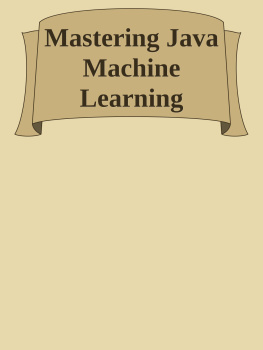


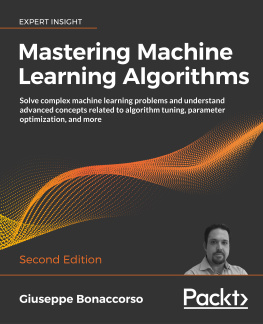
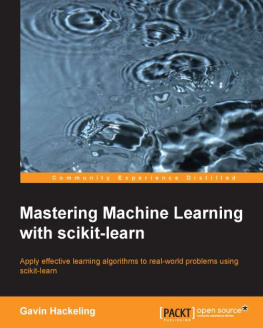
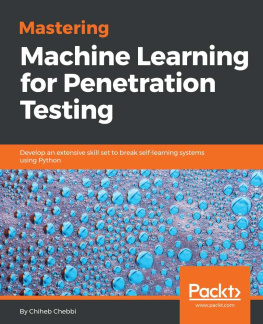
![Alexey Grigorev [Alexey Grigorev] - Mastering Java for Data Science](/uploads/posts/book/119620/thumbs/alexey-grigorev-alexey-grigorev-mastering-java.jpg)
![Mark Wickham [Mark Wickham] - Practical Java Machine Learning: Projects with Google Cloud Platform and Amazon Web Services](/uploads/posts/book/119359/thumbs/mark-wickham-mark-wickham-practical-java.jpg)
